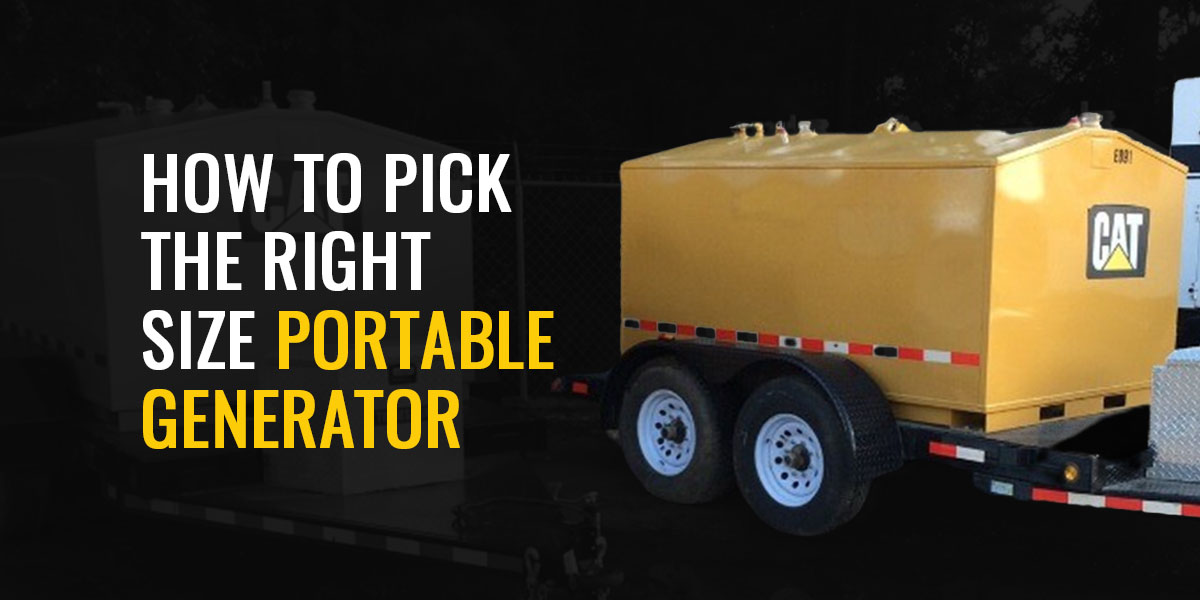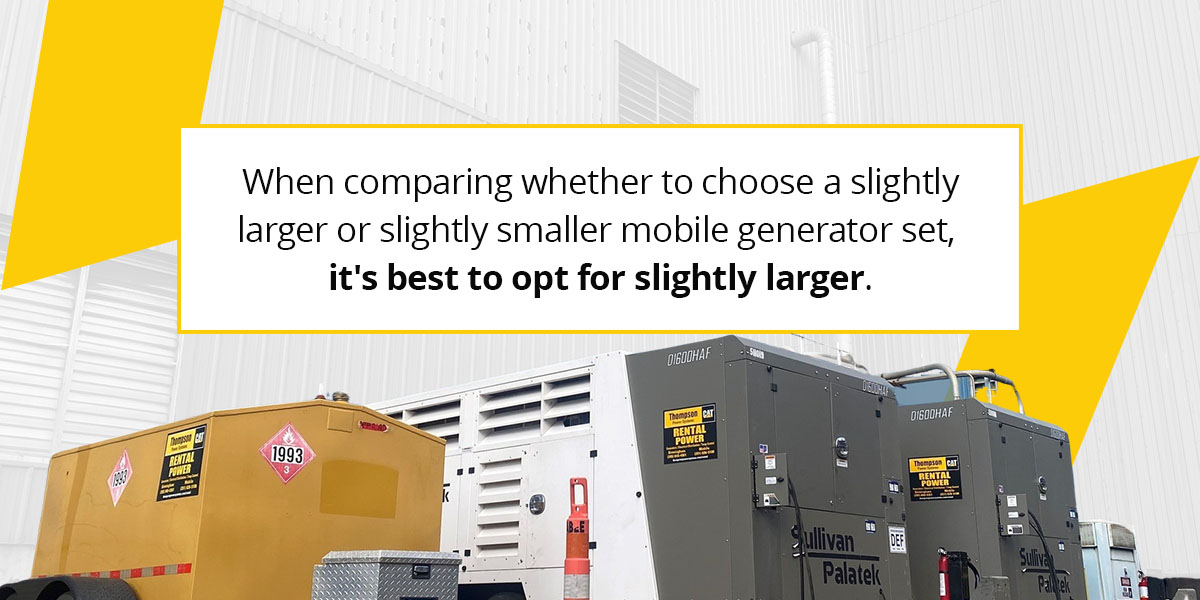

Businesses can benefit greatly by having portable industrial generators at their disposal. A towable unit is easy to transport to different job sites. When you need to supply electricity at a construction site or power another remote location, a towable generator is ready to hitch to the back of a vehicle or mount onto a trailer.
Unlike permanent standby generators, portable industrial generators are designed for temporary installation and mobility. You can seamlessly transfer a portable generator between sites to fulfill short-term power needs.
Explore how to choose the right portable generator size and power capacity for your site.
It’s important to note that generators usually fall into three groups: standby, non-commercial portable and towable or mobile.
Standby generators satisfy permanent, energy-intensive power requirements. They provide backup power for larger areas like construction sites, houses, office buildings, and hospitals in the case of a power outage. Standby generators remain in one spot, making transportation more of a challenge.
Non-commercial portable generators are compact units that fulfill more temporary, less energy-intensive power needs. For instance, you might take one to a campsite to charge a phone. You can also plug electric-powered appliances, tools, and extension cords into these small generators. Keep in mind that these types of portable generators cannot power entire construction sites.
Towable generator sets — also known as mobile or portable industrial generators — are lightweight and often equipped with wheels. They are designed to be mounted on trailers for easy transport around a site. Due to their smaller size, mobile generators are relatively quiet and often more eco-friendly depending on the fuel. You’ll find towable generators at a range of locations, such as construction sites, stadiums, military bases, mines, and more.
Put simply, portable industrial generators offer the higher power capabilities of a standby option with the flexibility to tow it to various job sites. Wherever you need power, a towable generator is ready to follow.
Mobile generator sets are typically rated by the following units:
There are two common types of mobile generators:
Size is a key consideration in the process of buying a commercial portable generator. An incorrect size can damage the equipment, tools, and appliances drawing power — plus the generator itself.
Choosing a smaller mobile generator may be tempting due to the more affordable price tag. However, a generator that’s too small or lacks sufficient wattage won’t successfully power your remote job site. An undersized unit must work harder to meet your power needs, significantly straining the generator and shortening its service life.
If your commercial site puts too much strain on an undersized generator, it increases the risk of overloading. Overloading can cut off your power source and damage the generator permanently. In worst-case scenarios, overloading can cause an electrical fire or even an explosion.
At the same time, you want to avoid investing in an oversized portable industrial generator. Doing so could result in a potential waste of money, as you’re paying for more watts than you require. A unit that’s too large can also cause unnecessary power loss and even damage your equipment.

When comparing whether to choose a slightly larger or slightly smaller mobile generator set, it’s best to opt for slightly larger. Choosing a portable generator with extra wattage and power capacity is a safer route for the following reasons:
Follow these two steps to select the right portable industrial generator size for your applications.
Start by making a list of everything your towable generator will need to power. Locate the starting and running wattage for each piece of equipment. You’ll typically find these wattages inscribed on the back, bottom, or nameplate. You can also consult your owner’s manual, either hard copy or online, to find this information.
Your total wattage requirement will help you select a suitable mobile generator size. Add the total running watts of all equipment you’ll need to power plus your highest single starting watts. This calculation can help determine your power output needs.
Generators in the United States are normally rated in kW or kVA. Add up your equipment’s kW or kVA figures to calculate your total power capacity requirements. You should invest in a mobile generator that can withstand this total wattage without using 100% of it.
Additionally, manufacturers usually include performance charts with their units. Looking at these charts can help you estimate the appropriate portable generator size. Examine the different power ratings and find one that’s compatible with your applications.
At Thompson Power Systems, we proudly serve Alabama and the Florida Panhandle with high-quality power systems. If you need a dependable mobile power generator for a job site, we can help you find a solution.
We supply generator sets from Caterpillar, a brand renowned for its durability and performance. Our knowledgeable technicians will work with you to find a Cat® generator compatible with your requirements.
Browse our assortment of mobile generator sets to find the solutions you’re looking for. If you have questions about choosing the ideal unit for your applications, contact us online or call 205-849-4361.